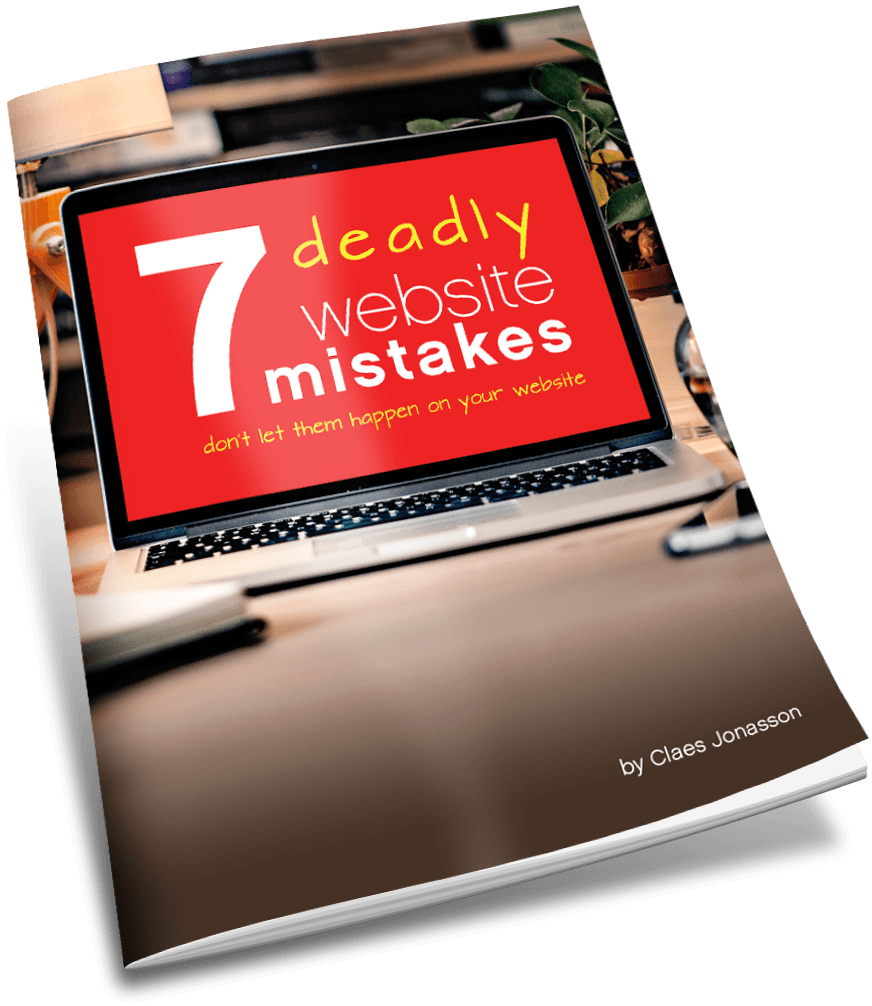Who is your website for?
Your website isn’t for the whole world.
There, I said it. It’s out in the open.
Actually, that’s a good thing. It would totally crash if they call came.
One business owner was well aware that the website he built and wrestled himself, was a confusing hodgepodge of bits of stuff. And certainly didn’t inspire confidence in his ability to deliver on a project.
“But it’s okay,” he said. “My website isn’t selling anything. Clients don’t come there to buy.”
Eh, sure. Then why have a website at all?
Seriously, I think he might possibly have been better off not having a website at all. There are excuses for that: “I’m working on it.” “Coming later this year.” And so on.
But a truly confusing, outdated-looking mishmash? That just hurts.
It’s about the audience
So let’s talk about audience. Which is a whole topic on its own. Not just for the website. But for the business or organization. As in, who is your target audience. Your ideal customer.
Frequently even if that’s known for the organization, it’s not translated into website design.
Yet, it’s crucial that the website be tailored for the intended audience and that it connects with them.
The problem is often that there seems to be so many possible ways to group our audience:
- Consumers or businesses?
- Men or women?
- What age brackets?
- The website could be focused on people we directly invite there
- Or we count on people finding it, but then we need to define the service area:
- local
- regional
- national
- worldwide. (But don’t claim that just because you could maybe, possibly deliver to Outer Mongolia)
The more we understand who our ideal customer is, the better we can tailor the website, improve the experience and meet their needs.
Each of the groups above has different needs, different things they’re looking for. Understanding that helps define what the website should contain — content, functionality/features included, typography, colors, images and video used.
Don’t forget SEO
Who the website is for even affects the almighty search engine optimization (SEO).
For instance, optimizing SEO on a site for a local audience is different from a regional audience. And totally different from one where visitors come from nationwide or even internationally.
Conversely, if your site is for an invited audience (one you will contact and give the link to), then SEO may be largely irrelevant.
Understanding our audience
In addition to the above considerations, let’s keep in mind that our visitors are people (even for B2B). So we need to take into account age, gender, interests, education levels and a number of other metrics. That all comprises demographics.
In addition, there’s psychographics (attitudes, aspirations, likes/dislikes, analytical/emotional). Often ignored, because not as easy to define or measure. But ever so important. Because they’re about what makes your ideal customer tick.
Together, demographics and psychographics give us a better picture of who our audience is and what is important to them.
The result should be a detailed description of an ideal customer. Because we’re not very effective talking to everyone. We are effective when we focus one person. When we do that well, website visitors will recognize themselves and feel like we “get them”. A connection has been made.
But I want to reach everybody
Because this is hard work and because we feel like we’re excluding people from our offer (we actually are — the ones that wouldn’t buy anyway, the ones who are not the right fit for our offer), we often hesitate to narrow our focus.
It feels better to say that we’re there for everyone. Less judgmental. Besides there’s the fear that I’ll miss out on sales.
Actually, it’s far easier to widen the targeting, should we somehow manage to narrow down too far, than it will ever be to rein in messaging that is too broad.
In the end, when we say we’re for everybody, we’re really for nobody.
Conversely, when it’s clear who the intended website audience is and what they need to do there to become customers, then and only then, can we build a website that helps turn visitors into customers and raving fans.
Ignore this groundwork and it may be a great looking website, but it will not do well in terms of conversion.
New visitors or existing customers
Another big question is whether the website is for new visitors to discover you or for existing, returning customers.
You might say “both”. Which is probably true. Unless it’s a sales page that people won’t go back to once they buy.
If the website is for both, then that reflects in design and content.
It must welcome first-time visitors and help them find their way around. Provide key information they need. So they can know, like and eventually trust you. Only then will they become customers.
Existing customers also must find content that is relevant to their needs, making their return visit worth their time. If not, they won’t come back again. That means updating and changing content regularly so there are new things to discover. The website must be relevant to their situation.
None of that happens by chance. We need to understand our audience and be intentional in providing them the on-site experience they need.
A call to action
Now that we know who the website is for, the question becomes what we want visitors to do once they are on the website.
- How will the engage?
- What actions can they take?
- Are the options and offers relevant for them?
- For a first time visitor as well as someone who has checked you out a few times and is ready to buy?
- Can they easily buy your product or service?
If they’re not ready to buy, can they learn about your area of expertise? Few deals happen in just one encounter. It’s like dating. You don’t propose on the first date. Or if you do, it’s unlikely to garner an enthusiastic “Yes, I will.”
Dating takes time. Website visitors need to get to know you. Like you. Eventually trust you. That takes time and it affects how we design websites.
It is tempting to say that a website exists to create “awareness”. While that could be true, more often it’s a cop-out when we don’t want to do the (harder) work of creating relevant, relationship-building content and calls to action.
We simply claim we’re building “awareness”. Except how do you track or measure that? So we won’t know how the website is doing. If it’s doing.
Sure, we can look at analytics, but what good are visitors if they never actually connect with your organization in a meaningful manner?
Most businesses and nonprofits really don’t need more awareness. They need raving fans. And those are two very different things.
Engaged followers
Whether site visitors buy or engage with one of your cultivation offers, you want them to become your followers. Who find your website valuable and come back. Who let you get to know them, so you can keep in touch with them.
At the end of the day, a good website helps visitors get to know you. Once they know you, to like you. And once they know and like you, to trust you.
That’s essential for both potential and existing customers. When all 3 are present, things can happen. You have a new customer. You have a fan, who will tell others.
That’s the real point and purpose of a website: It exists as a way to build a connection with other people: our customers, our fans, our constituents. So they know us and will come back. Then becoming our ongoing customers. Eventually wanting to tell others about our products or services.
When a website does that, it will more than pay for itself. Way faster than we think. It becomes an essential asset that helps grow our business or organization.
But it all starts with answering the simple question: “Who is your website for?”
Never miss out!
Get an email update every time I publish new content. Be the first to know!

